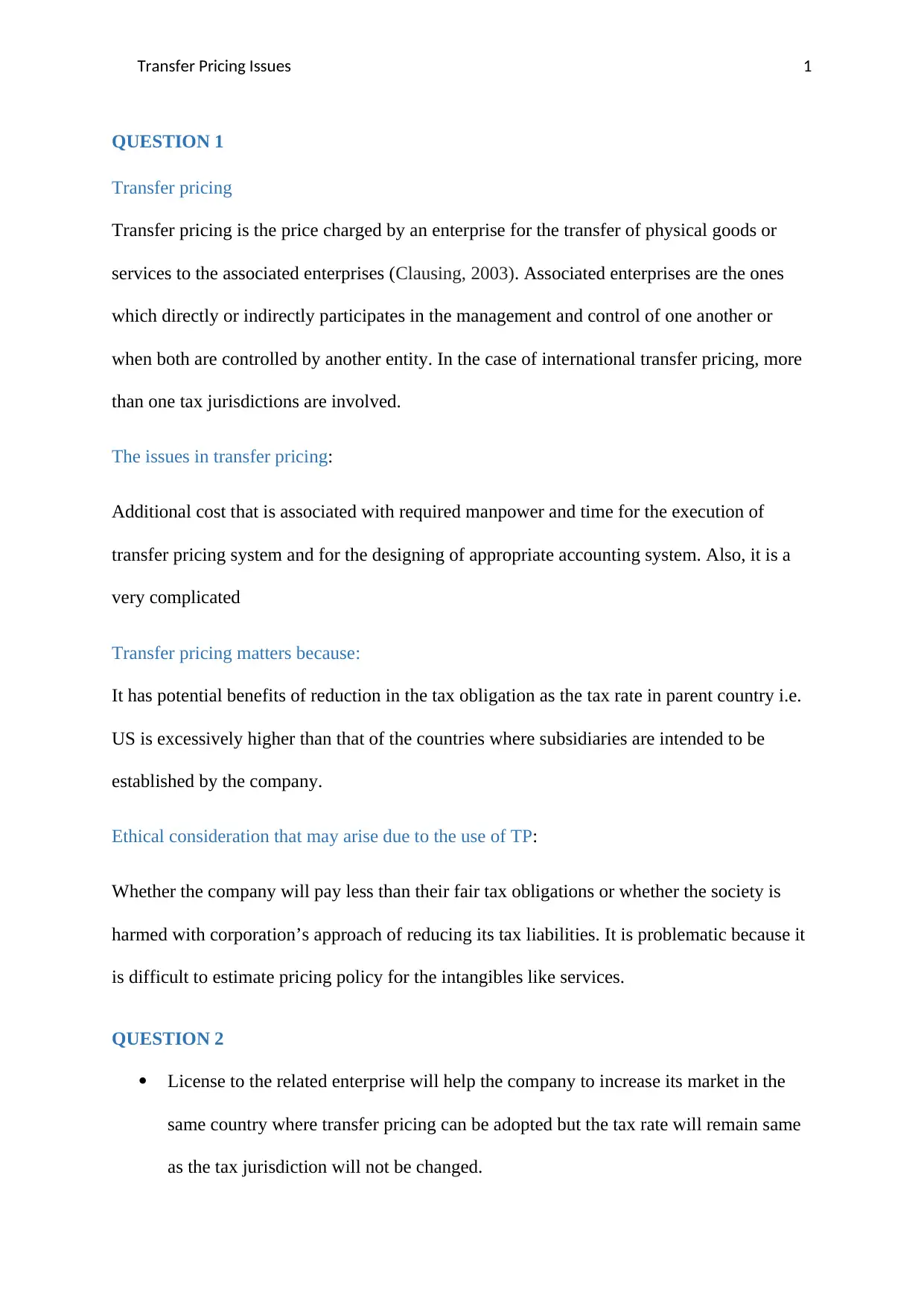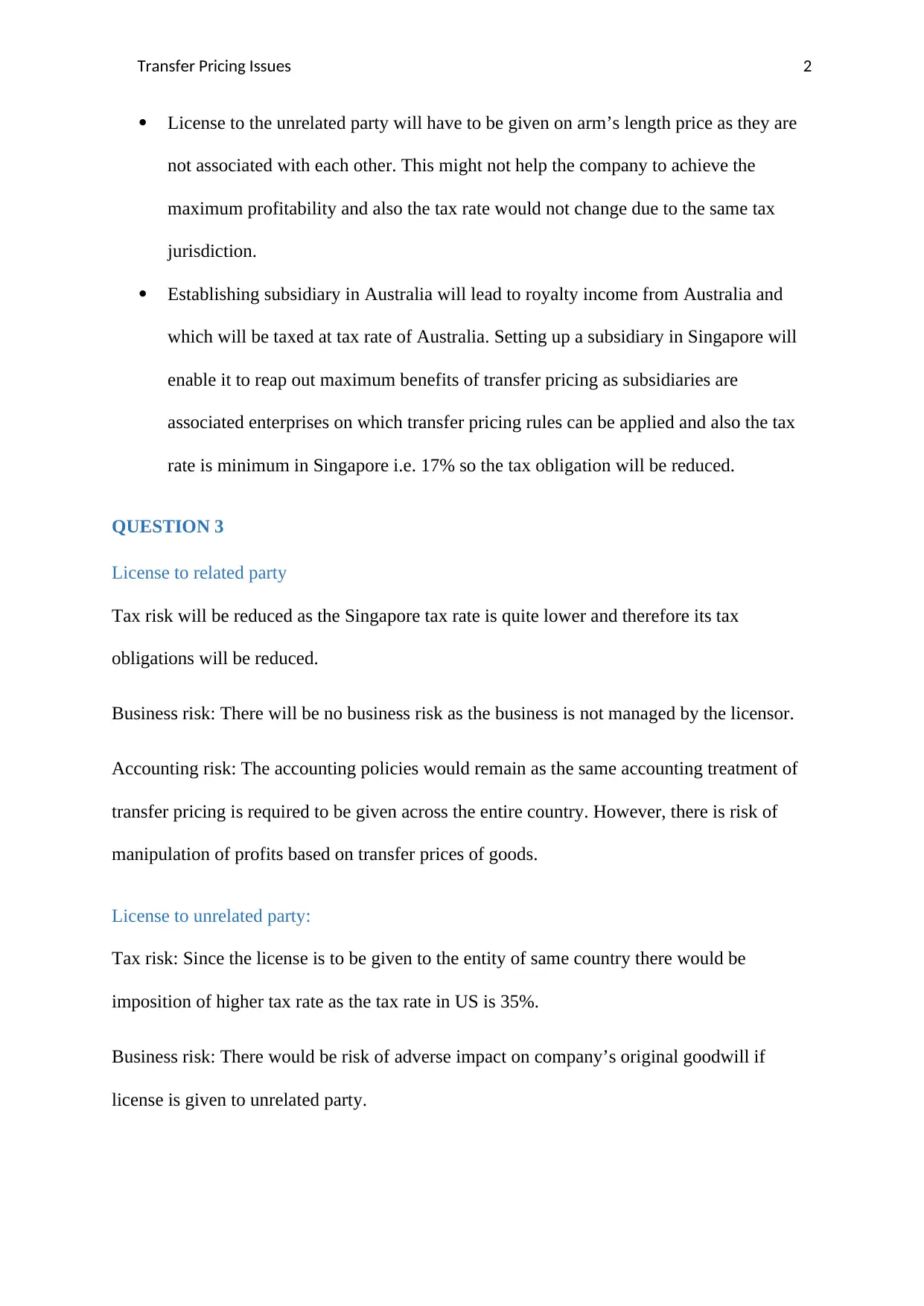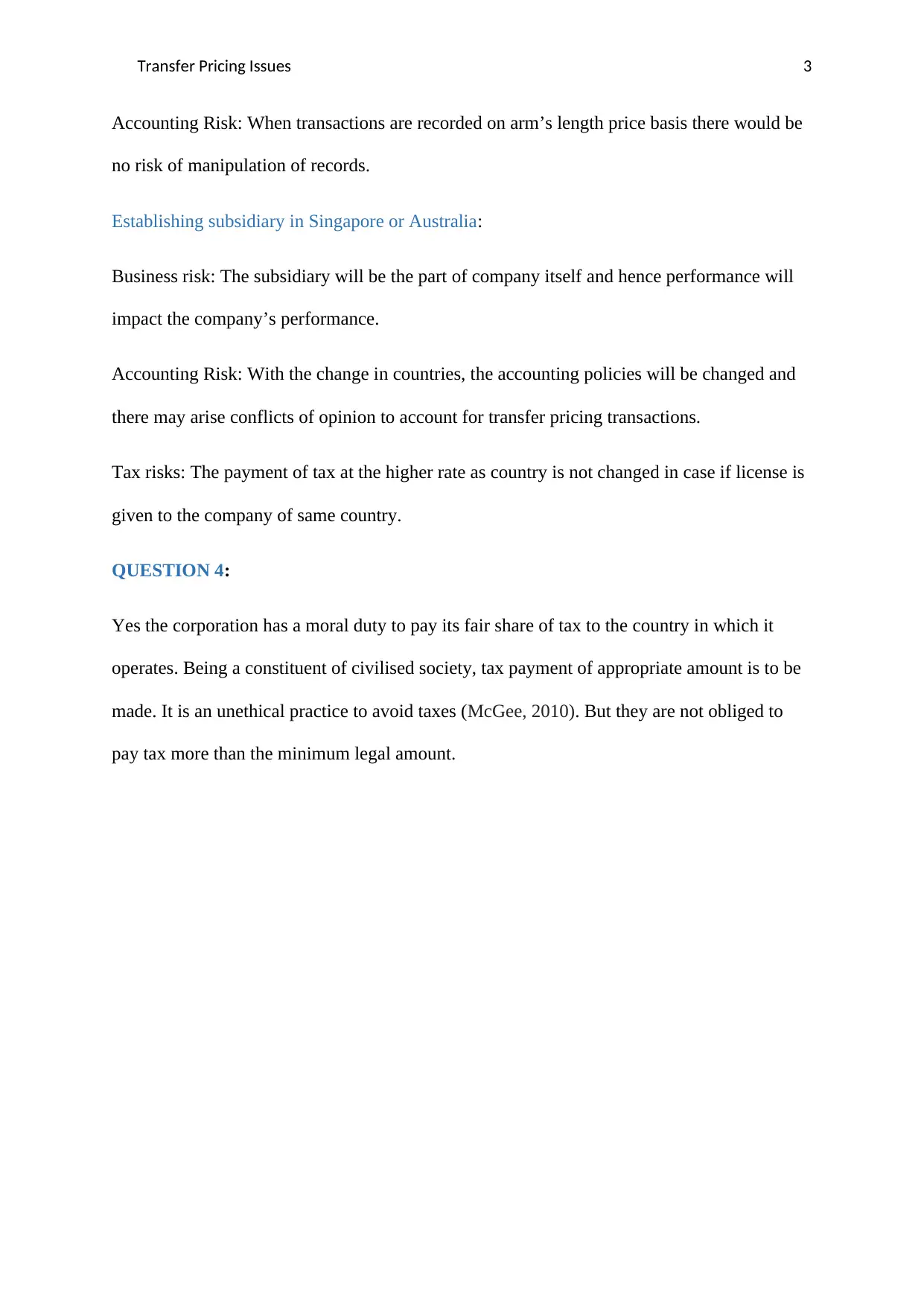FIN301: Transfer Pricing Issues Analysis and Recommendations
VerifiedAdded on 2020/05/16
|5
|772
|79
Homework Assignment
AI Summary
This assignment analyzes transfer pricing, the practice of setting prices for transactions between related entities within a multinational corporation. It addresses the key issues associated with transfer pricing, including the additional costs and complexities of implementation and the potential for tax reduction. The analysis explores the ethical considerations that arise from transfer pricing strategies, specifically whether companies have a moral obligation to pay their fair share of taxes. The assignment considers different scenarios, such as licensing to related and unrelated parties and establishing subsidiaries in different countries (Australia and Singapore), evaluating the associated tax, business, and accounting risks. The conclusion emphasizes the moral duty of corporations to pay their fair share of taxes, while acknowledging that they are not obligated to pay more than the legally required minimum.
1 out of 5











![[object Object]](/_next/static/media/star-bottom.7253800d.svg)